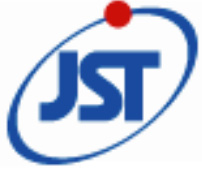JST/CREST Symposium: WBMA'09
Watching Biomolecules in Action
Single Molecule Biology Symposium
2nd Kanazawa Bio-AFM Workshop
December 15-17, 2009, Osaka, Japan
Get together
December 14 (17:00-19:00), Senri Hankyu Hotel
Deadlines
call for papers - October 15
abstract submission - October 30
Web Registration Period
August 6 - November 30
Scope and Topics
Single Molecule Function & Dynamics
Single DNA/RNA-Protein Dynamics
Nano-characterization & Dynamics of Bio-membranes
Cell Function & Dynamics
Single Molecule Force Analysis
Single Molecule SPM Imaging
Advanced Optical Techniques
Advanced SPM Techniques
Functional Fluorescent Probes
Bio-engineering & Bio-MEMS
The single-molecule biology has completely changed the traditional style of research on the functional mechanism of biological molecules. By watching biological molecules in action at the single molecule level, our understanding of how they function has become incomparable with the past. One of our dreams of more directly understanding molecule-weaving vital phenomena has been materialized. This young field that has spread over the world is still in progress. In addition to “classical” single-molecule techniques such as TIRFM, optical nanometry, single-molecule FRET, optical tweezers and single-molecule force spectroscopy, various new techniques are also developed; functional fluorescent protein probes, blinking-free quantum dots, diffraction-limit-breaking high-resolution fluorescence microscopy (STED, STORM, PALM, and etc.), and micro devices produced by MEMS technology. Single-molecule biology approach is now being adapted for the study of live cell systems, bringing innovation also to cell biology. Moreover, high-speed AFM capable of directly visualizing dynamic molecular processes and ultrasound SPM capable of looking into the interior of cells at nanometer resolution are recently developed. Thus, “more direct understanding” is being enhanced. These recent advances show signs of explosive growth of this field in the near future. Therefore, now is the best possible time for us to think of the prospects of this research field. In this Symposium, we look over the past progress, closely look at the most recent advances, and discuss to better orient our research in the next decade.

